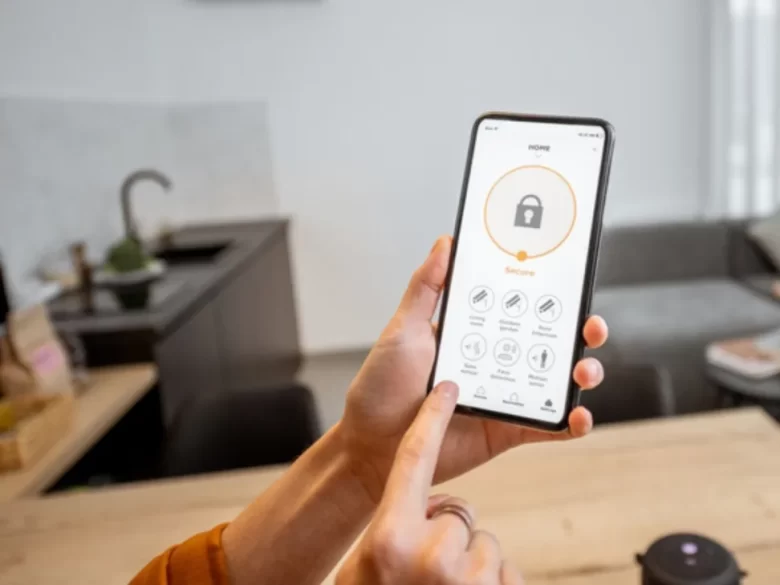It strikes a chord that there are barely any high-tech devices whose active retrieval does not involve the utilization of smart devices today. These range from the traditional thermostats to more sophisticated toilets and ovens, that beautify our homes, yet in a way, afford us some sense of modernity. However, a more chilling question comes with this advancement: are we safe? With security breaches and constant threats of violations of privacy being the order of the day, most users are concerned about the threat posed to them.
Although they contribute positively towards our way of living, this development has its downside too, that is, it puts us at risk too. That is why learning to be privacy-focused in this era is essential to keep yourself well. The information comes from or builds on campaigns aimed at informing the population about the dangers posed by smart devices, and guides them on how to protect themselves without giving up on all devices. It starts by exploring the outcome of some of those diseases among our smartness.
Understanding the Risks of Smart Devices
Some of the smart devices have even become household essentials since they offer more comfort than what is found in throwing and living in the present as well as making communication worth crying about more speedy. Each evolutionary history of technological progress bears its categorical threat which the analogical and rhinological instruments do emerge. Most smart technology has apps that do a very good job when connected to other smart technology. Maana caffeine taking the easy way out is never ideal and sweeps under the ultimate situation where hatred starts unspeakable. Sift from general to details, outside to inside to where they fracture each bone in their non-abdication alliance, some of the sexual activities too polite.
Additionally, the inherent functionalism of smart technology also allows for further and wider alternative forms of breaches. A single breached device can be an entry point to one’s entire home network and all the devices connected to it. Setting up privacy features is always a problem because they are never so straightforward and can be outright weak. Users often do not realize that they will share more than they intended because of the default manufacturer setting.
Tips for Securing Your Smart Devices
Such preventative measures are necessary due to the potential privacy and data infringement risks. Begin by replacing the standard passwords provided. These are often quite vulnerable to hackers immediately. After that, two-step verification should be enabled wherever possible. This gives another measure of security that prevents any infiltration.
Likewise, regularly upgrade your operating system. Most companies keep pushing out updates because they patch the issues that were discovered and improve the product. For wise use, a separate Wi-Fi connection can be used for the smart devices. This in turn prevents these appliances from being used to expose other personal devices.
Choosing the Right Smart Devices with Security in Mind
For more protection, choose smart gadgets with more security capabilities. Choose options that include end-to-end encryption and more software upgrades. These are important for the safety of your data. Read user reviews and ratings on security concerns to find out how other people fared with those devices. There may be great specifications on the gadget but the privacy protection equipped on the gadget may not be up to standard.
Pay attention to the brands that share information on how they use the data they collect and focus on the collection. If a manufacturer can be trusted, they will elaborate on what they do with your data. Also, check how well it works with any additional security devices you might already own. Remember that the gadget must let you alter the privacy level in a straightforward way to manipulate.
The Role of Manufacturers and Government Regulations
The manufacturers are particularly important today when privacy in the smart devices market is gauged. It is they who come up with the ideas of these gadgets and manufacture them but their remedial measures on security differ. Some of them focus on the privacy of the user and try to apply a high level of encryption and make regular updates. Some others may forget about these issues because of some cost considerations. Legislation can help solve this issue. Slowly some countries began adopting better regulations regarding how consumers’ data ought to be used and thus manufacturing companies can be punished for breaching users’ privacy. Such regulation assists producers in raising their game of inventing products.
Nevertheless, the passage of laws lags quite behind changes in technology. This particularly is a problem for consumers because they have to deal with a market of complicated devices that obtain information from users, making it hard to find a way around them because there are no protection factors in place.
Balancing Convenience and Privacy
Smart devices are convenient to the extreme. They make everyday processes and activities better than what one ever thought possible. But unfortunately, this comfort of usage tends to come with a price. It is the privacy concerns that many users ignore especially when incorporating such gadgets in their homes.
Most individuals prefer to enjoy modern technology but still emphasize the need to protect their personal information. It calls for being aware and taking certain actions so that someone else’s sensitive information is not exposed. Decide on how much information you are willing to share with devices. Regularly check: Are the performed activities suitable for you? Evaluate the efficiency of the smart devices in use: which ones are essential, and which ones are just for show? This way, you can have smart technology and still ensure that your private sphere is not invaded.
Conclusion
As smart devices become part of our lives we must take control of their privacy. All the benefits of such devices seem to obscure the dangers one can expose themselves to if one is not careful. Begin with proactive use of the computer: configuring the settings; and regulating access and permissions. Time to analyze the data that has been shared and examine with whom it has been shared. Information is precious although people ordinarily abuse it.
Remain updated about new security rubbers manufactured. Updates are very often loaded with important patches meant for improving security and mitigating vulnerability. Also, consider the use of these other tools for additional protection including firewalls and VPS. Such measures act as an effective wall between your devices and cyber threats.
FAQs
1. What type of data is collected by smart devices?
Some common types of data that smart devices tend to gather include behavior data, geolocation data, including voice data, as well as general data on preferences. This data is useful in enhancing the performance of the product but may also come with privacy concerns.
2. Where can I check the types of data collected by my smart device?
For most of the manufacturers, the information concerning the collection of personal data is outlined in the privacy policies. It is important to note all these policies before purchasing such devices to appreciate the scope of the information being collected and its purpose.
3. Are there brands that are user-privacy-centric compared to others?
Of course, some brands are more security-conscious than others employ strong encryption technologies, and offer privacy policies within reasonable limits. It is advisable to seek reviews from experts in the field to know which brands are useful in protecting consumers.
4. Efficiency is a leading aspect of today’s technologies and smart devices, but can I say the same about sacrificing my privacy concerns?
Certainly! By following the standard security protection of your device and being aware of the threats, you can reduce the risk of inconveniences to your personal affairs, while also enjoying the benefits of smart devices.
5. What should I do if I think my device is being hacked?
If you experience any odd activities or have an inclination that someone may have access to your device without authorization, you should turn off the Wi-Fi on the device as a first step. Modify any account associated with this device. If possible, you may want to back up data and reset the device to its factory settings if it does not work out again.




